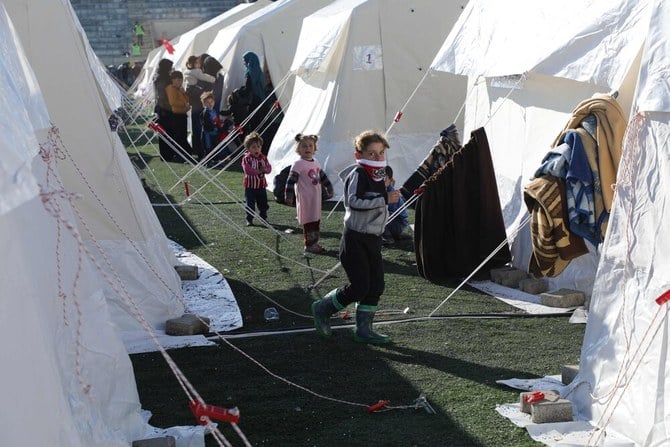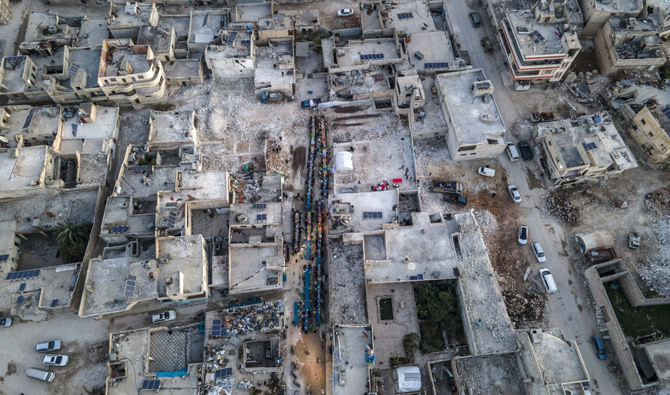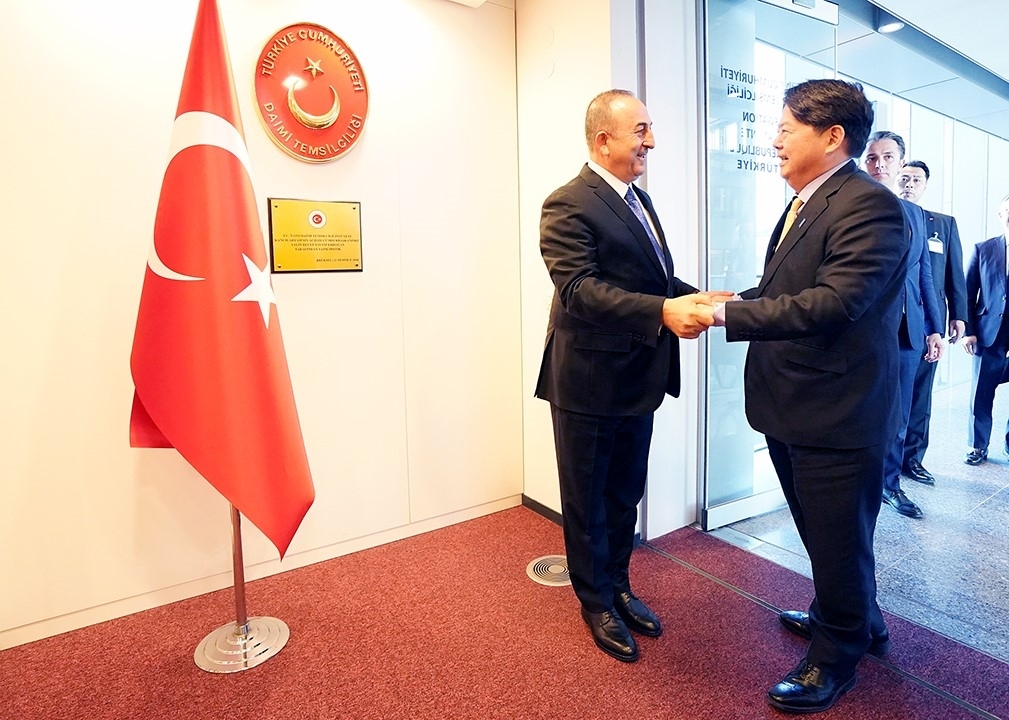NEW YORK CITY: The international community must not abandon the 4 million children in Syria for whom the Feb. 6 earthquakes came as “a trauma on top of trauma,” the UN’s Children’s Fund, UNICEF, has warned.
“It is our duty to make sure that we do not forget them,” said Adele Khodr, the organization’s regional director for the Middle East and North Africa.
“It is our duty, as well, to ensure that this earthquake does not make them even worse than what they are, and we should leave anything that is political aside and focus only on the humanitarian.”
Ten days after a massive earthquake and major aftershocks devastated parts of southern Turkiye and northwestern Syria, the confirmed death toll exceeds 41,000, and continues to rise. UNICEF fears thousands of children are among the dead, while millions of young people who survived are in dire need of humanitarian assistance.
An estimated 7 million children were directly affected by the earthquake in the two countries, including 2.5 million in Syria.
Khodr told Arab News that what worries her most is the unknown number of young people in remote villages that have not been reached by international aid organizations and so have yet to receive any humanitarian assistance.
“What we know about, we can address,” she said. “But what really is worrying for us is what we don’t know about.”
As hopes of finding survivors in the rubble of collapsed buildings fades, search and rescue operations are winding down and so the aid effort will increasingly turn toward helping people in areas that have not been reached so far, she added.
Many children and their families are in desperate need of additional support, Khodr said. In addition, many first responders and employees of the local partner organizations with which UNICEF works were killed, injured or displaced, while their offices and equipment were damaged or destroyed.
The existing situation in the country before the disaster struck was not “a normal background,” Khodr said. The earthquake is an “emergency on top of an emergency,” after 12 years of civil war that have drained Syria of resources and destroyed much of its infrastructure.
She said the natural calamity has compounded “a very serious economic crisis” that was already unfolding, including a decline in the value of the Syrian pound, the effects of which included the deterioration of basic health services for children and the education system.
In addition, the country has been dealing with a cholera epidemic since September, exacerbated by damage to water infrastructure caused by the war and now made even worse by this month’s disaster.
“The earthquake has damaged water tanks, especially elevated ones,” said Khodr. “Some water pipes have also been dislocated, which means the availability of water is going to be a very big issue.
“And the fact, also, is that people now might be staying inside big centers, like schools or other public buildings: How do you get rid of the wastewater and the solid waste? All these things around water sanitation and hygiene are worrying in areas that were already subject to a cholera epidemic.
“We are very worried that should spring come and should the damaged water and sanitation infrastructure not be repaired, we would be heading into a serious health (crisis) with waterborne diseases (spreading) among the children.”
The earthquake damaged or destroyed many buildings, so millions of children and their families are now sleeping outside, on the sides of roads or under bridges, or in public buildings that remain intact, such as schools and bus stations.
Even those whose homes are still standing are afraid to return home to buildings that might be structurally unsound and vulnerable to aftershocks, or might collapse as a result of heavy rain or other severe weather events.
Sleeping outside, exposed to harsh winter conditions in which freezing rain and snow are not uncommon, is already leading to growing numbers of children suffering from hypothermia or acute respiratory infections, said Khodr.
UNICEF is also worried about the mental health of children driven from their homes, she said, especially in the rebel-held northwest of the country where families had already been displaced at least once — and some more than three times — before the earthquake.
“Many children said that they felt that the whole world was spinning around them,” Khodr said. “This psychosocial impact on children is one of our first worries.”
Further displacement, combined with the dire economic situation, once again raises the specter of growing food insecurity, she added, and the “already higher level of poverty in some pockets in those areas could lead to more cases of malnutrition among children.”
Meanwhile, many people who have lost their homes are seeking refuge inside schools, which means classes will not immediately resume and children’s education will suffer as a result, said Khodr.
The immediate efforts by UNICEF to save lives in Syria in the aftermath of the earthquake includes shipments of hygiene kits, food, drinking water, warm winter clothes and tents, along with the provision of medical aid.
The organization is also working with local partners to provide children with psychosocial and mental health support.
It is distributing recreational kits “for the children to keep them busy and to try to establish a sense of normalcy in their lives and allow them to deal with the trauma that they have been through,” Khodr said.
For a week after the earthquake, the Syrian regime refused to allow any deliveries of aid to rebel-held areas in the northwest of the country and insisted that all humanitarian assistance should go through the capital, Damascus.
But following intensive international pressure to open more crossings along Syria’s border with Turkiye to allow the delivery of aid, President Bashar Assad on Monday approved the reopening of two additional crossing points, Bal Al-Hawa and Al-Raee, for an initial period of three months, the UN said.
Despite the continuing politicization of aid mechanisms in Syria, Khodr said that “we are a child rights-based agency and (our) mandate remains a purely humanitarian one. Our position is that we have to continuously try to reach all the children wherever they are, through whatever means.
“We cannot select to use X or Y, we have to select and use whatever is available for us and we will continuously push for access using all these means.
“The essential thing is to be able to reach every child. And it doesn’t matter how.”






















